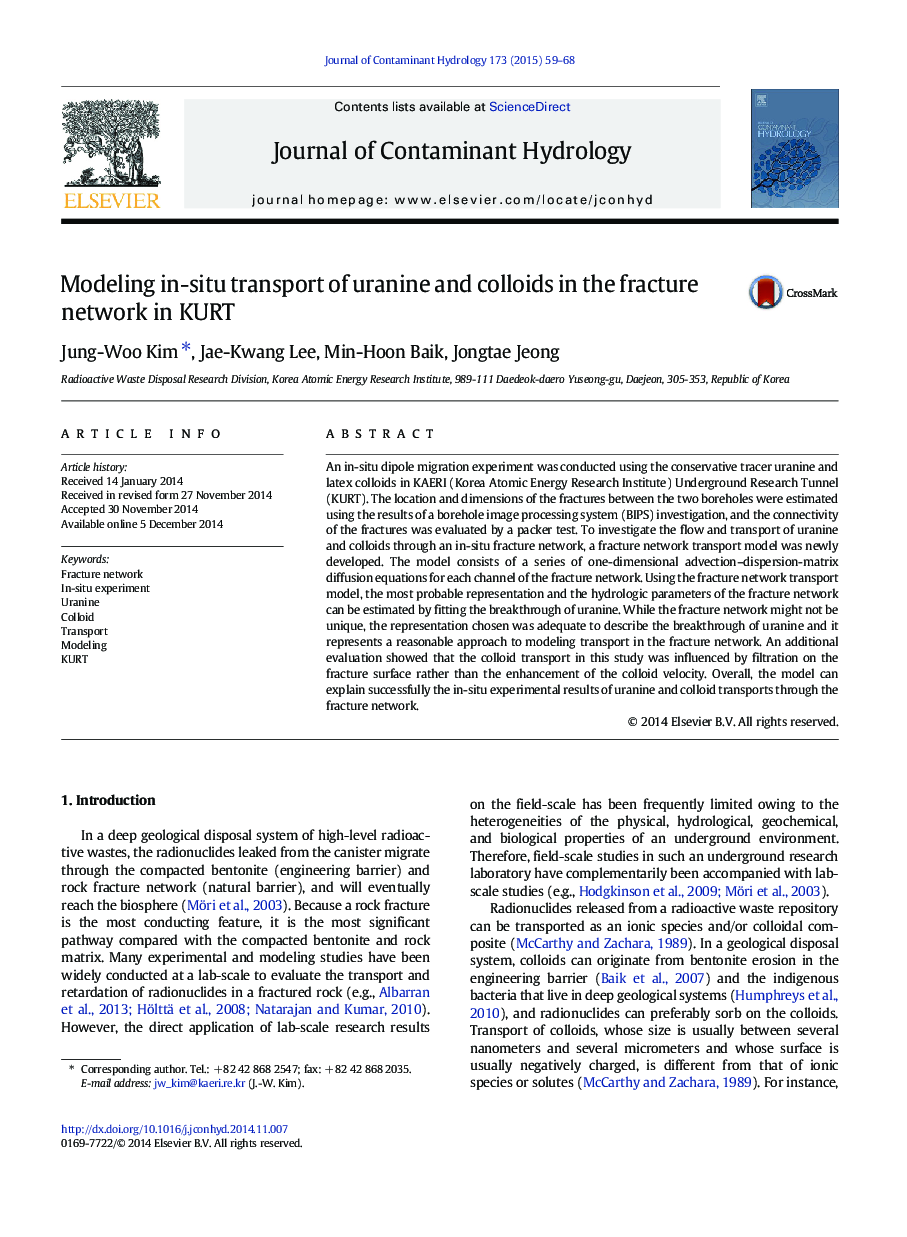| Article ID | Journal | Published Year | Pages | File Type |
|---|---|---|---|---|
| 4546461 | Journal of Contaminant Hydrology | 2015 | 10 Pages |
•Location and dimensions of in-situ fractures were estimated by BIPS investigation.•Connectivity of the fracture network was estimated by the packer tests.•Fracture network transport model was developed for uranine and colloid transports.•Probable representation of fracture network was estimated by uranine breakthrough.
An in-situ dipole migration experiment was conducted using the conservative tracer uranine and latex colloids in KAERI (Korea Atomic Energy Research Institute) Underground Research Tunnel (KURT). The location and dimensions of the fractures between the two boreholes were estimated using the results of a borehole image processing system (BIPS) investigation, and the connectivity of the fractures was evaluated by a packer test. To investigate the flow and transport of uranine and colloids through an in-situ fracture network, a fracture network transport model was newly developed. The model consists of a series of one-dimensional advection–dispersion-matrix diffusion equations for each channel of the fracture network. Using the fracture network transport model, the most probable representation and the hydrologic parameters of the fracture network can be estimated by fitting the breakthrough of uranine. While the fracture network might not be unique, the representation chosen was adequate to describe the breakthrough of uranine and it represents a reasonable approach to modeling transport in the fracture network. An additional evaluation showed that the colloid transport in this study was influenced by filtration on the fracture surface rather than the enhancement of the colloid velocity. Overall, the model can explain successfully the in-situ experimental results of uranine and colloid transports through the fracture network.
